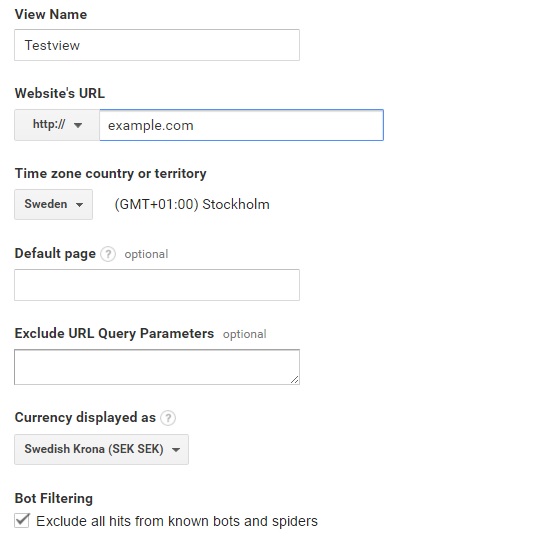Recommended views
Our recommendation when setting up your account in Google Analytics is to create at least three views for each property: All Website Data, All Website Data + Filters and Test View. How you name them is up to you but what each of them contains is more important.
- All Website Data: This view should be left unfiltered and untouched. That way you can always go back to all of the data that has been collected if you need to and not risking anything getting lost.
- Test View: This is the place for testing new filters, to see how your traffic gets affected before you add them to your main view. By testing first, you can make sure you are not filtrating any visitors that you otherwise would expect to show up and leaves you with more reliable data.
- All Website Data + Filters: This is your main view, the one you should use to read your data day to day. You add your already tested filters here.

Setting up a view
Create a new view in admin mode in the column for Views.
- Click the down arrow in the list to create a new view.
- Once a new view has been created, you can add additional settings like timezone, setting a currency or checking the box for excluding hits from bots and spiders.
If you want to learn more about using different views, read our post on excluding spam traffic.
Why it is worth it
When creating a new account in Google Analytics, you will automatically get one standard view that collects all data unfiltered. Sticking with this view alone is not practial, as you will collect a substansial amount of data that you cannot draw any analysis from.
You can also create more views than the three mentioned in this post, that contain specific filters. This could be handy since making changes to a filter that is applied in more than one view, will affect the filter in the related views as well. Read more in our blog post How filters help you read between the lines.
